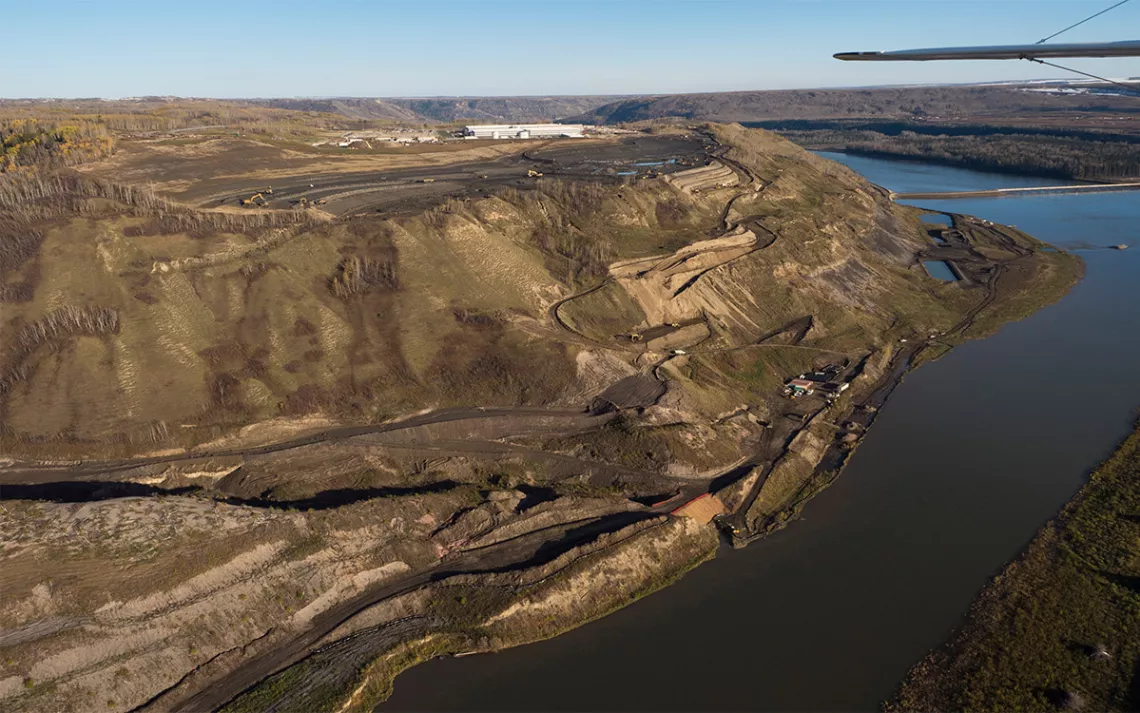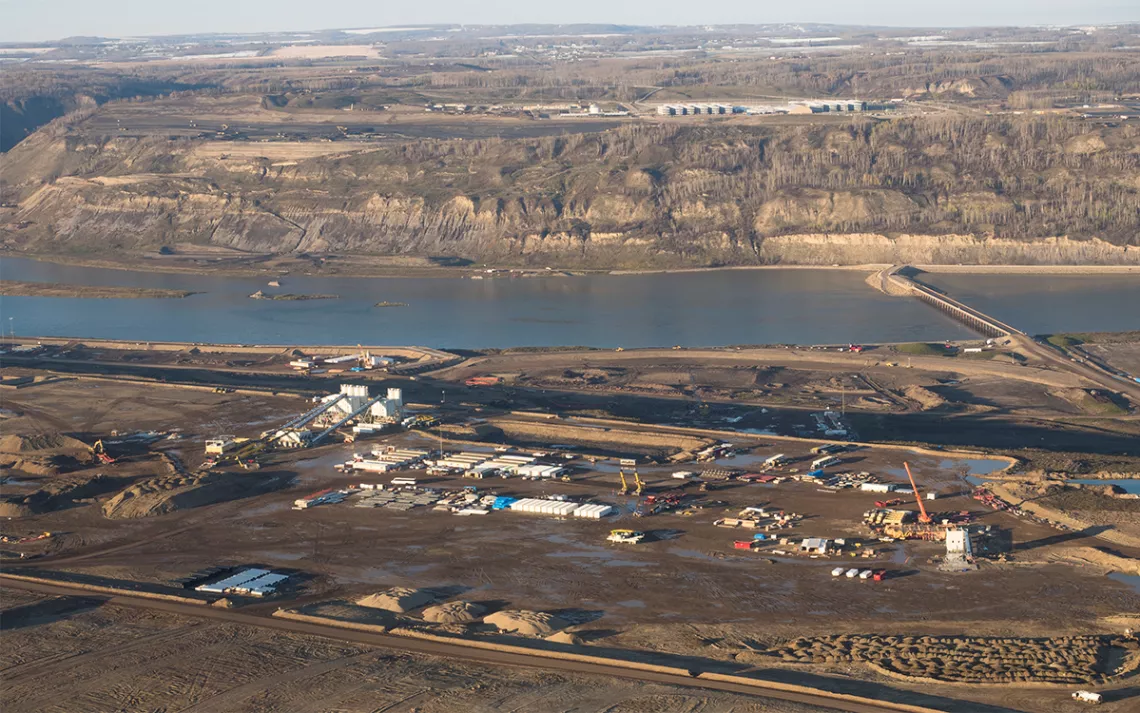British Columbia’s New Democratic Party Backs Destructive Site C Dam
The government’s decision betrays farmers, First Nations, and environmentalists

Photos courtesy of Louis Bockner
On Tuesday, December 11, British Columbia’s premier John Horgan announced that his government would move forward with construction of the massive Site C Dam on the Peace River.
The hydroelectric dam, which first broke ground in 2015, is the largest, most expensive public works project in British Columbia’s history. When completed, it will flood 25 square miles of the Peace River Valley, much of it prime agricultural land and First Nations territory.
Looking somber, Horgan began the press conference to announce the decision by lambasting the Liberal Party for originally greenlighting the project. His party, the New Democratic Party (NDP), replaced the Liberals in last May’s election. “For many years, I have been extremely critical of the BC Liberal decision to proceed with this project,” he said, pointing to problems such as a cost overrun of about $1 billion dollars to date.
According to Horgan, his cabinet faced the difficult choice of proceeding with what is now projected to be at least a $10 billion-dollar enterprise, the costs of which ratepayers will absorb over a 70-year period, or cancel the project and immediately cover $2 billion dollars in construction and remediation bills (on top of $2 billion already spent), which would result in significant rate increases.
Opponents of the dam vehemently disagree with Horgan’s rationale for continuing construction. “It seems the government didn’t want to have any of the costs from the project constrain their spending during their term of office,” Tim Thielmann, who serves as legal council to West Moberly and Prophet River First Nations, says. “Rather than rearrange their priorities to make good on their commitments to indigenous people, they kicked the can down the road and said it’s going to be somebody else’s problem.”
The announcement is devastating for farmers, First Nations, and environmentalists who have long opposed the dam and who feel betrayed by the NDP. The party campaigned heavily on the promise that if it came to power, it would submit the project to an independent review by the British Columbia Utility Commission (BCUC), a step that the Liberal Party bypassed.
Once in office, the NDP did in fact submit the project for review and BCUC released its report in November. It found that BC Hydro overestimated future demands for power by about 30 percent and predicts that with no real domestic demand for the electricity generated, power will be sold at a loss. In other words, according to the report, the notion that the dam will recoup costs over a 70-year period without overburdening customers is not realistic. It also determined that renewable energy such as wind, solar, and geothermal could be as good or better for B.C. ratepayers than the Site C project.

The government has decided to move forward with the project anyway, leaving many First Nations members especially disappointed. When he was campaigning, “Horgan made a big deal out of sending the project to the BCUC for review and canceling it if the BCUC report wasn’t favorable,” Roland Willson, chief of the West Moberly First Nations, says. “When the BCUC report came out and said there was less harm in canceling it than in keeping it going, we thought he would honor his word.”
West Moberly and Prophet River First Nations have announced that they will file a civil suit against the provincial government for infringing on rights accorded to them in the 1899 treaty known as Treaty 8. The civil suit will include a request for an injunction while the case is decided.
“Since the BCUC report came out saying there’s no justification for Site C, it’s a pretty clear Treaty infringement,” Willson says. “Horgan also campaigned on the promise to uphold the United Nations Declaration on the Rights of Indigenous Peoples. Site C is a clear violation of that.”
The BCUC report did not address the negative environmental impacts of the dam, which are immense. According to Galen Armstrong, an organizer with Sierra Club BC, it will destroy the ecosystem within the footprint of the reservoir, harm ecosystems downstream by altering and curtailing the flow of water, and increase mercury contamination in fish and other species (already a problem in two other reservoirs created by dams on the Peace River).
Proponents of the project argue that hydroelectric dams like this produce clean energy and are necessary to help British Columbia meet carbon emissions reduction targets set by the Paris climate agreement. But Armstrong points out that mega dams like this one are a far cry from clean energy. “We know that huge reservoirs are emitters of methane,” he says. A 2016 study published in BioScience found that rotting vegetable matter buried by reservoirs release up to 25 percent more methane than previously thought, making up 1.3 percent of total global emissions.
Theilmann, Willson, and Armstrong all predict a strong public backlash in response to the NDP’s decision. “I don’t think the NDP government realizes to what extent they have betrayed their base. Most people were probably expecting them to cancel the project,” Armstrong says. “As more people become attuned to what this decision means, I think we will see discontent broaden out to the general public. It’s important not to see this decision as the last chapter.”
 The Magazine of The Sierra Club
The Magazine of The Sierra Club



